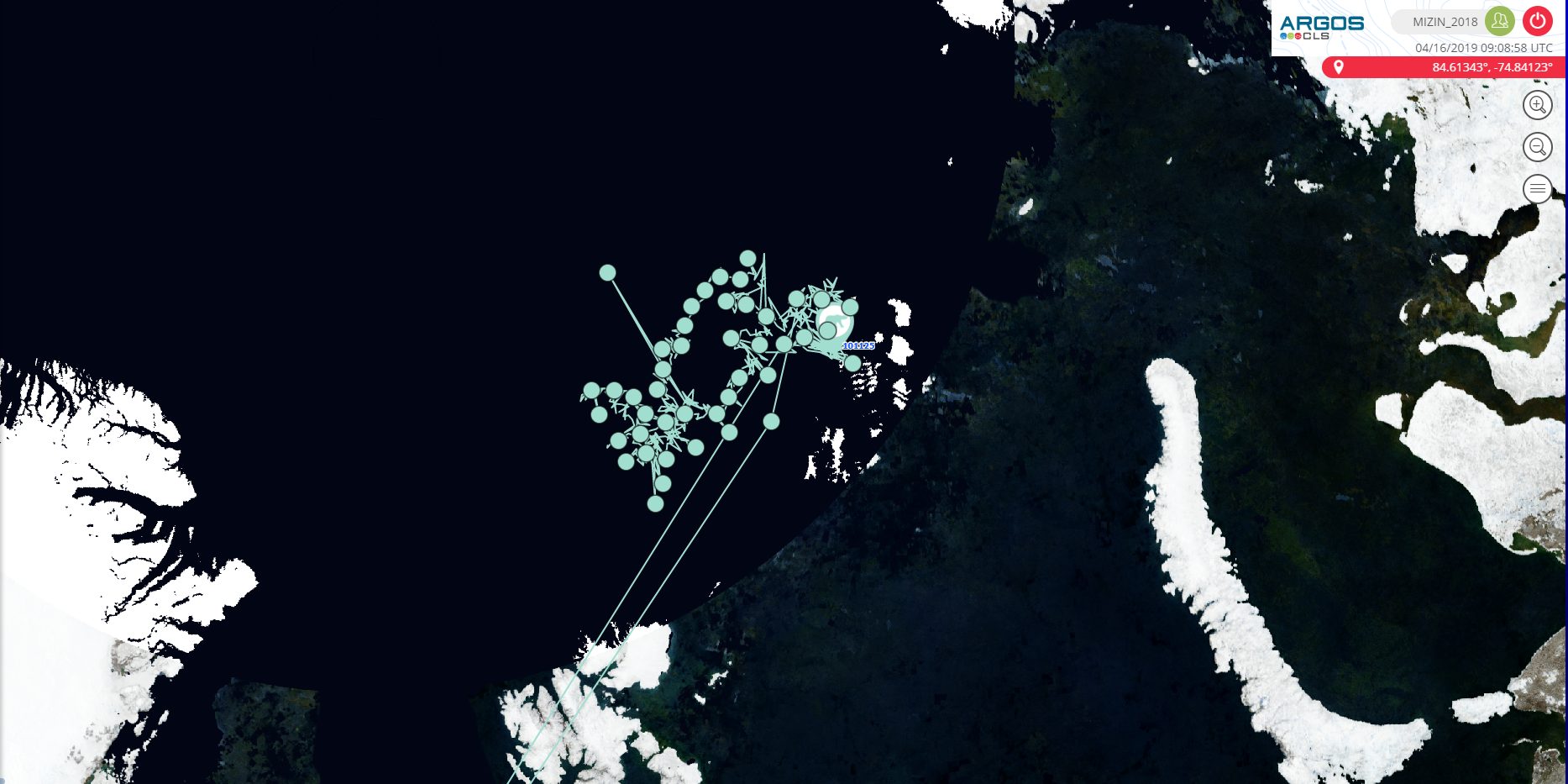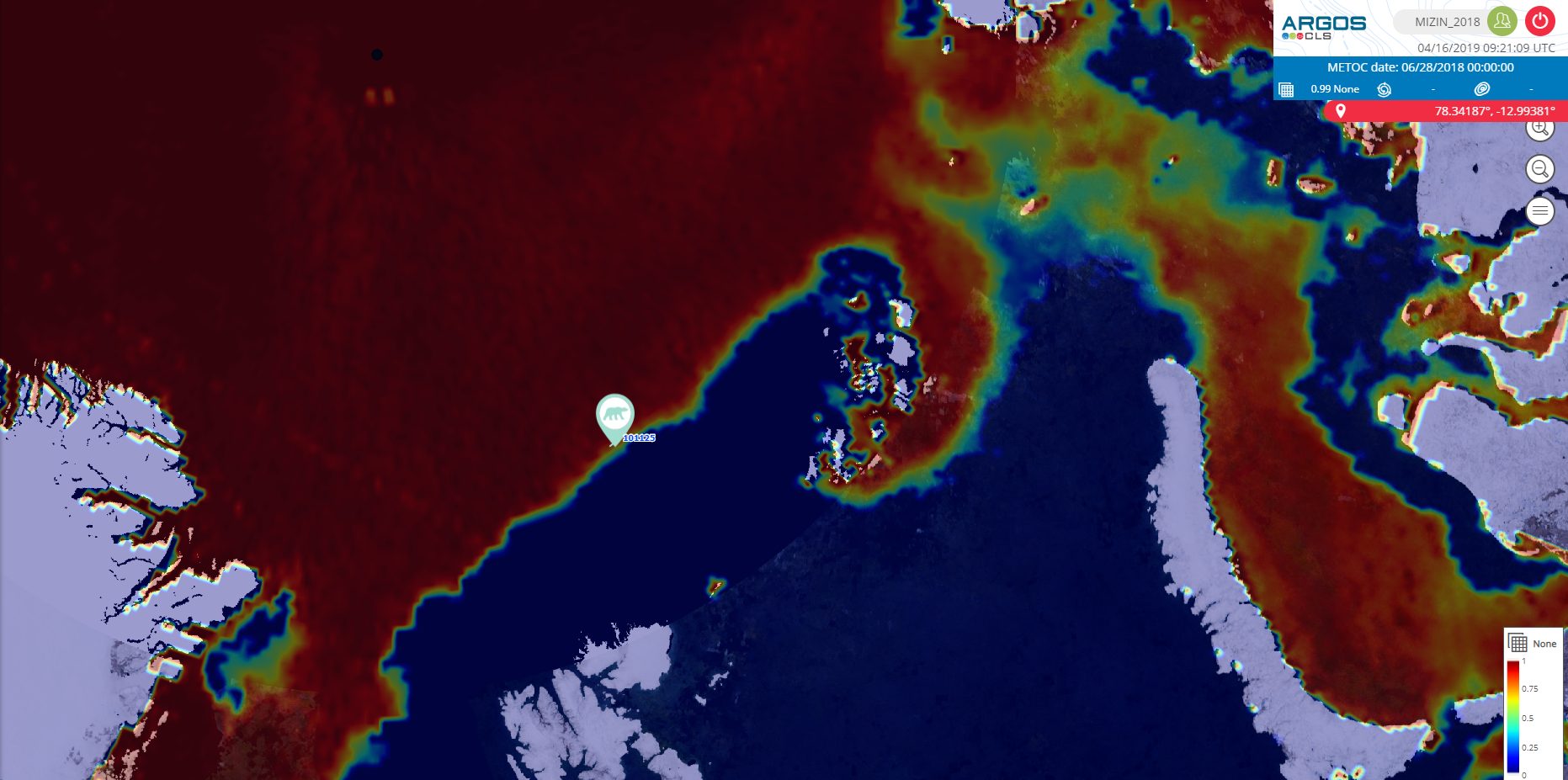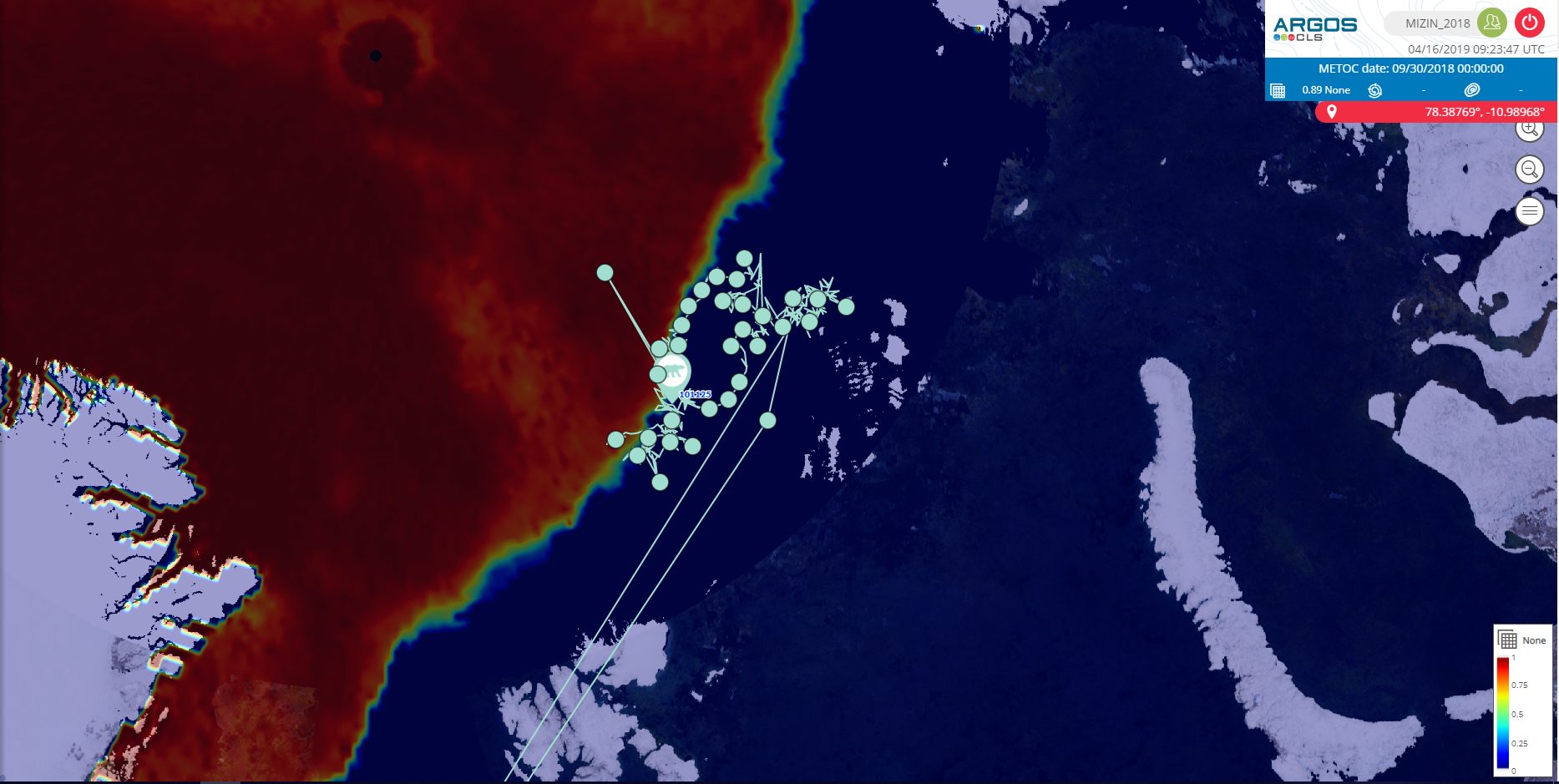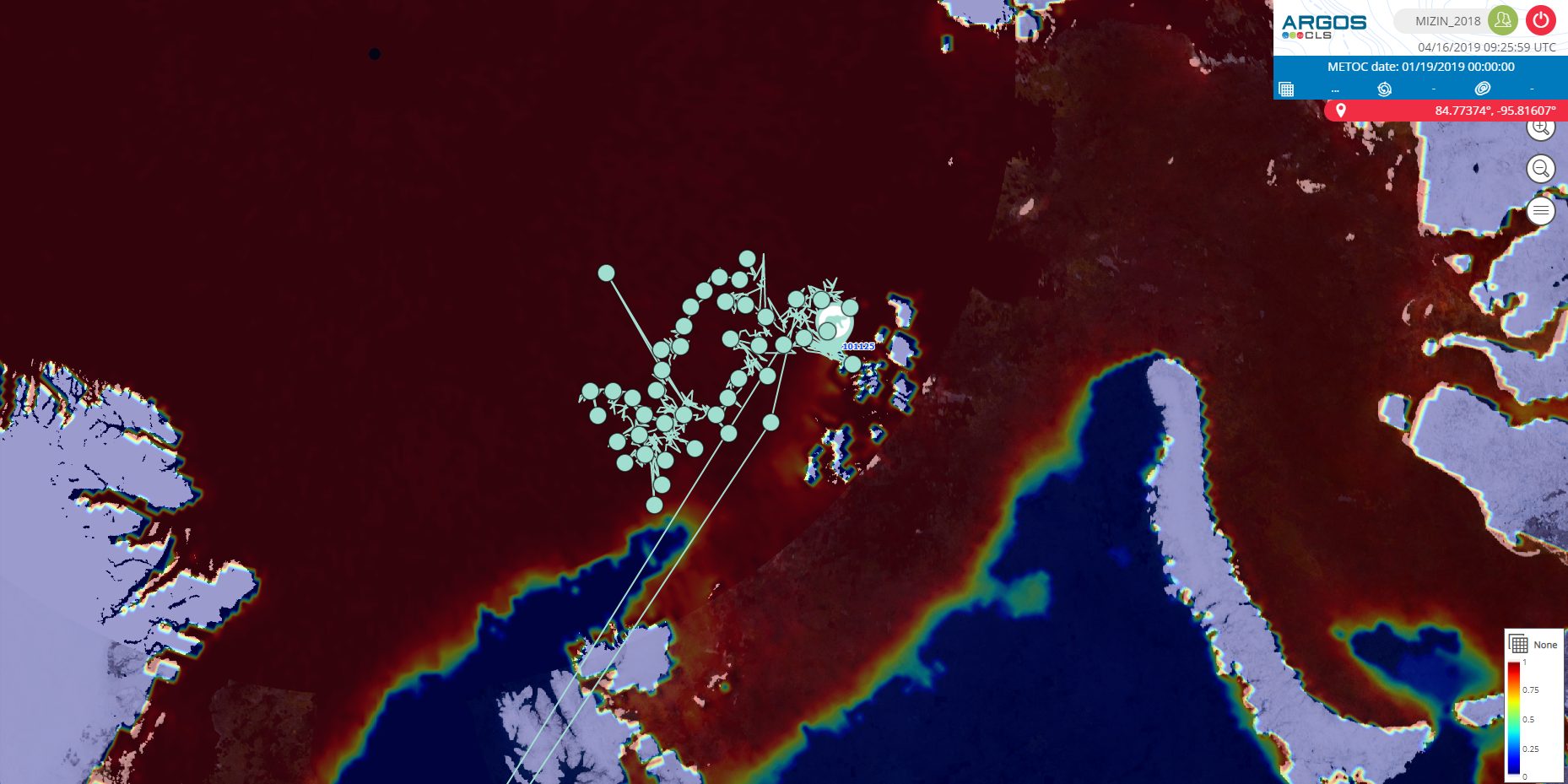← Back
Argos sheds light on polar bears’ changing summer habits
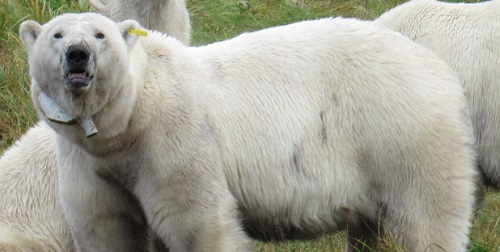
For some years one of the major problems of polar bears has been the dramatic reduction of their habitat, i.e. Arctic sea ice, during the summer time. The bears are thus faced with extreme conditions and must go inland, since the sea ice is retreating North too quickly. Argos PTTs enable the monitoring of seasonal habitats, as well as the behavior of family groups and single female bears.
Since 2010, the A. N. Severtsov Institute of Ecology and Evolution of the Russian Academy of Sciences have studied polar bears with Argos PTT-fitted collars. In 2018, Argos tracking revealed that females with cubs born in the year left their reproduction dens on land earlier than usual to spend Summer on drifting sea ice, near polynias and leads.
On islands, or continental coastlines, males and females with one or two year-old cubs are often seen trying to find meagre meals of vegetation, lemmings, eggs or chicks from nests… They look for food in the river estuaries or channels at low tides, in particular sea mammal remnants that have washed ashore. This is a difficult period for the animals, but most adapt to long stay on lands. The most vulnerable animals, who eventually die from exhaustion are solitary individuals aged between 2 and 3 years old who didn’t manage to adapt in time to living and hunting alone.
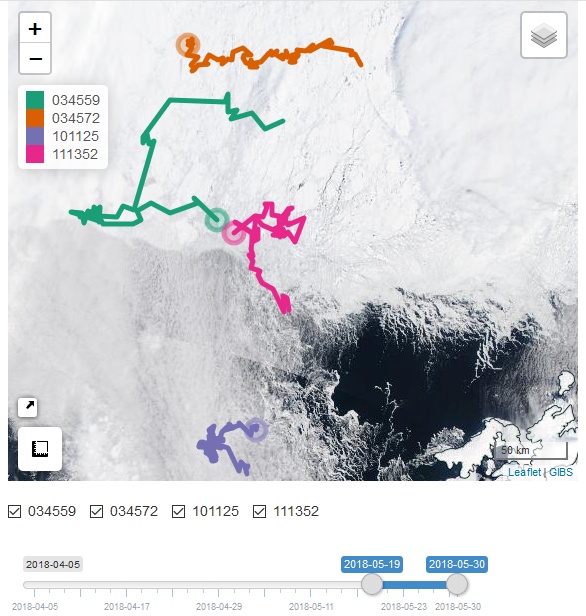
Track on Ice of four polar bears (credits A. N. Severtsov Institute of Ecology and Evolution of the Russian Academy of Sciences)
More info about land animals tracking
What did the use of Argos-fitted collars on Shokalsky and Vilkitsky Islands in June 2018 to study the migrations of two solitary polar bears reveal?
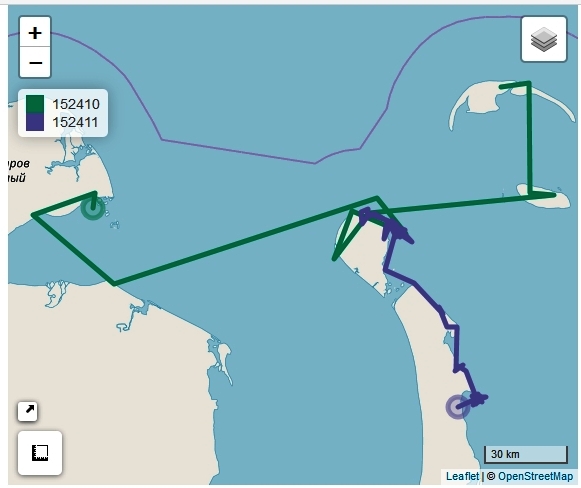
Summer Tracks of two polar bears (credits A. N. Severtsov Institute of Ecology and Evolution of the Russian Academy of Sciences)
This study showed that the bears moved intensively between the islands, swimming 100 to 150 km, looking for food all the time. For example, analysis of the activities and movements of the equipped female on Shokalsky Island shows that one day after being fitted with the collar, she investigated the Northern part of the Island. Then she swam towards the Yavay peninsula, and migrated from the Eastern coast of this peninsula up to the islands near Cape Peschany. After a few days in the area, she came back to the Southern part of Shokalsky Island. Later, this female was foraging in the North-eastern and North western parts of the Yavay peninsula, moving mainly along the coast, never going further from it than 1 to 2 km. Mid-October, she began migrating North, but waited for ice (formation) on Shokalsky Island. As soon as the sea was frozen, she swam towards the new ice, and went towards the high latitudes.

